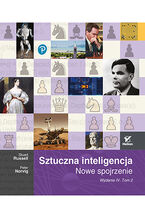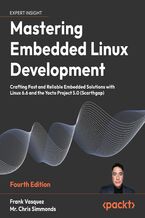Artificial Intelligence for Robotics. Build intelligent robots using ROS 2, Python, OpenCV, and AI/ML techniques for real-world tasks - Second Edition Francis X. Govers III, Dr. Kamesh Namuduri




- Autorzy:
- Francis X. Govers III, Dr. Kamesh Namuduri
- Serie wydawnicze:
- Practical
- Wydawnictwo:
- Packt Publishing
- Ocena:
- Stron:
- 344
- Dostępne formaty:
-
PDFePub
Opis
książki
:
Artificial Intelligence for Robotics. Build intelligent robots using ROS 2, Python, OpenCV, and AI/ML techniques for real-world tasks - Second Edition
Starting with robotics basics, robot architecture, control systems, and decision-making theory, this book presents systems-engineering methods to design problem-solving robots with single-board computers. You'll explore object recognition using YOLO and genetic algorithms to teach your robot to identify and pick up objects, leverage natural language processing to give your robot a voice, and master neural networks to classify and separate objects and navigate autonomously, before advancing to guiding your robot arms using reinforcement learning and genetic algorithms. The book also covers path planning and goal-oriented programming to prioritize your robot's tasks, showing you how to connect all software using Python and ROS 2 for a seamless experience.
By the end of this book, you'll have learned how to transform your robot into a helpful assistant with NLP and give it an artificial personality, ready to tackle real-world tasks and even crack jokes.
Wybrane bestsellery
Zobacz pozostałe książki z serii Practical
Packt Publishing - inne książki
Dzięki opcji "Druk na żądanie" do sprzedaży wracają tytuły Grupy Helion, które cieszyły sie dużym zainteresowaniem, a których nakład został wyprzedany.
Dla naszych Czytelników wydrukowaliśmy dodatkową pulę egzemplarzy w technice druku cyfrowego.
Co powinieneś wiedzieć o usłudze "Druk na żądanie":
- usługa obejmuje tylko widoczną poniżej listę tytułów, którą na bieżąco aktualizujemy;
- cena książki może być wyższa od początkowej ceny detalicznej, co jest spowodowane kosztami druku cyfrowego (wyższymi niż koszty tradycyjnego druku offsetowego). Obowiązująca cena jest zawsze podawana na stronie WWW książki;
- zawartość książki wraz z dodatkami (płyta CD, DVD) odpowiada jej pierwotnemu wydaniu i jest w pełni komplementarna;
- usługa nie obejmuje książek w kolorze.
Masz pytanie o konkretny tytuł? Napisz do nas: sklep@helion.pl
Książka drukowana









































Oceny i opinie klientów: Artificial Intelligence for Robotics. Build intelligent robots using ROS 2, Python, OpenCV, and AI/ML techniques for real-world tasks - Second Edition Francis X. Govers III, Dr. Kamesh Namuduri
(0)